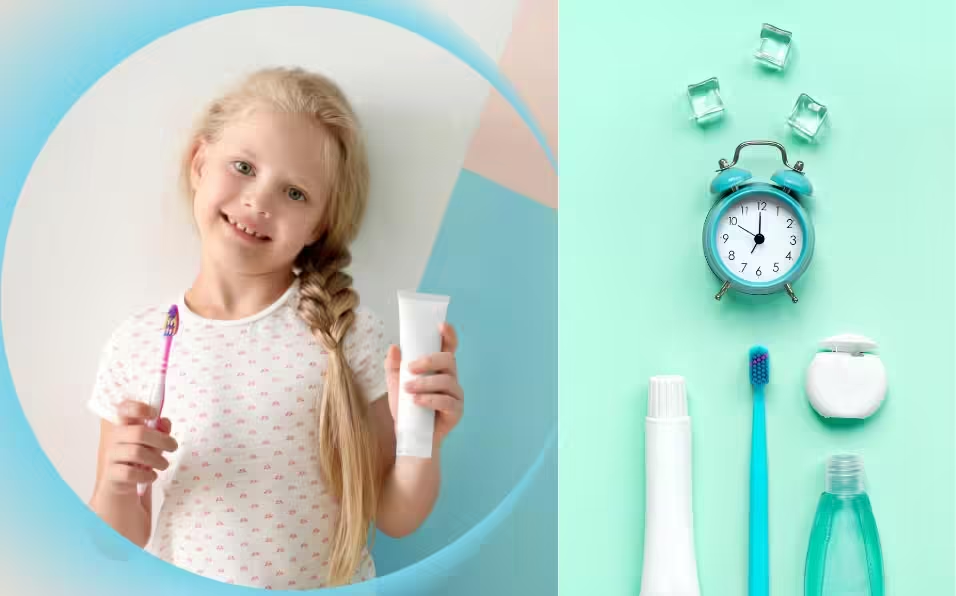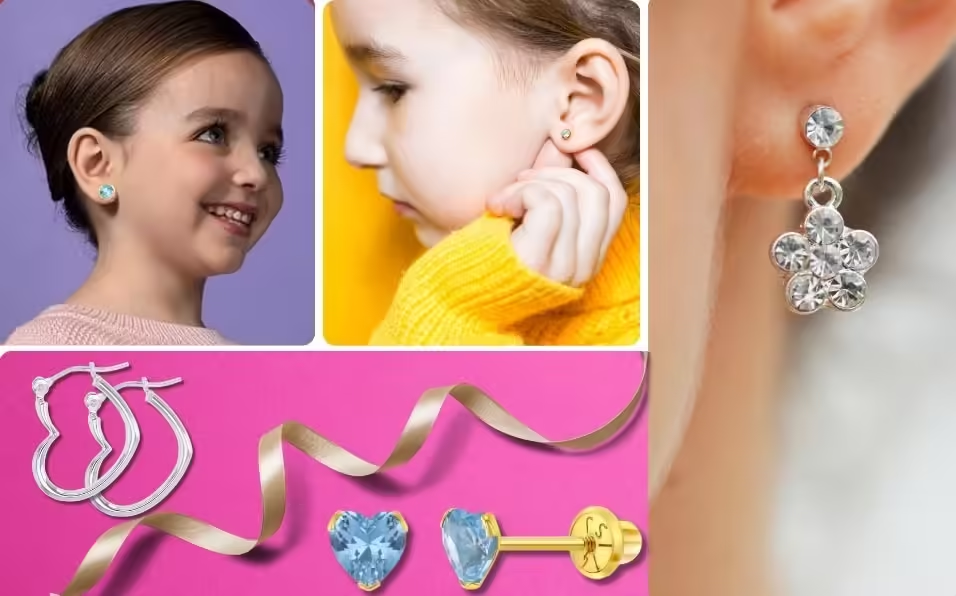Giving your child lifelong healthy teeth and gums is a great thing to do. Early dental care reduces cavities and gum disease and is vital for kids’ oral hygiene. It guarantees a lifelong healthy grin. Start tooth care when your baby’s first tooth appears. This not only helps them stay well but also feel great.
This post gives easy techniques to help your child’s teeth stay clean. These tricks work with babies and pre-teens. These practices can help your youngster keep healthy teeth forever.
Good dental health helps youngsters feel good and remain healthy. Focusing on youngsters’ oral hygiene keeps their teeth and gums healthy.
Essential Tips for kids' oral hygiene
1. Start Early
Before Teeth Erupt: Start caring for your baby’s teeth before the first new tooth appears. It’s important to clean their gums early. After feedings, clean your baby’s gums with a gentle, wet towel to eliminate milk residue. This hinders bacteria growth. Bacteria can cause problems when teeth come in.
First Tooth Care: Your child’s first tooth erupts at 6 months. Use toothpaste and a soft toothbrush. Avoid fluoride toothpaste. This avoids fluoride overdose. To develop a regimen, clean your baby’s teeth twice a day as they grow.
2. Brush Twice Daily
 Establish Routine: Brush your child’s teeth in the morning and at night. This keeps their teeth clean and healthy. It also stops cavities and gum problems.
Establish Routine: Brush your child’s teeth in the morning and at night. This keeps their teeth clean and healthy. It also stops cavities and gum problems.
Get It Right: Brush gently in circles. Cleaning the front, rear, and top of teeth is essential. Be thorough yet gentle, as gums can be sensitive.
Use the Right Amount of Toothpaste: For children under 3, use a rice-sized smear. For older youngsters, pea-sized is sufficient. Help your youngster wash their teeth till they’re 7 or 8 years old. They may not do it well on their own yet. It’s important to make sure they clean their teeth properly.
3. Floss Daily
When to Start: As soon as your child’s teeth are touching one another (usually age 2 or 3), you can begin flossing. Food and plaque can get stuck between teeth. A toothbrush may not always clear everything away.
Flossing: Slide floss between teeth softly. Clean each tooth by gliding it around. Your youngster may struggle with floss, so try floss picks or dental sticks. They are easier to use.
Supervision: Kids may need help flossing until they are older. You must help them until they can do it alone.
4. Use Proper Toothbrush
Toothbrushes that are age-appropriate: Children have smaller mouths. Finer bristles and smaller toothbrush heads make brushing more comfortable. As they grow, switch to an age-appropriate toothbrush. This helps clean their teeth better.
Soft Bristles: Choose toothbrushes with gentle bristles for children. Medium or hard bristles can irritate or even damage their gums and enamel.
Electric Toothbrushes: Let the kids also have fun with electric toothbrushes. They may help make brushing better. These toothbrushes have cool colors, timers, and soft vibrations that kids like.
5. Cut Sugary Snacks and Drinks
Avoid Sugar: Sugary foods and beverages destroy teeth. Acid-producing oral bacteria are sugar-fed. These acids can cause cavities. Eat fewer candies and sodas — it’s very essential.

Provide Healthy Snacks: Instead, give your youngster healthful snacks. Choose entire apples or bananas. You may add carrots or cucumbers. Yogurt, cheese, and other dairy are nutritious. These foods help promote oral health and support overall growth.
Water as the Best Drink: The greatest drink for kids’ teeth is water. It removes food particles and adjusts mouth pH, decreasing cavities.
6. Visit the Dentist Regularly
First dental checkup: Kids should obtain their first checkup before their first birthday. Or maybe they should go when their first tooth comes in. This helps keep their teeth healthy. This visit helps find any problems early.
Routine Checkups: After the first appointment, youngsters should see the dentist twice a year. That means every six months. It helps keep teeth clean and healthy. This guarantees healthy tooth growth and no cavities.
Preventive Care: Dental fluoride may be given as preventive care. Fluoride strengthens teeth. It can also stop cavities from forming. They may also apply a special sealant to the back teeth to help protect them from cavities.
7. Teach Proper Brushing Habits
Model Behavior: Kids learn by seeing their parents; therefore, wash their teeth. This emphasizes brushing as a daily habit. It also makes brushing a family activity rather than a burden. 
Make Brushing Fun: Use tunes, clocks, or apps to make brushing fun. Set a two-minute timer to ensure your youngster brushes long enough. Electric toothbrushes often include timers.
Positive Reinforcement: Praise your youngster for good brushing. Allow older children to pick their toothbrush and toothpaste. This will make them excited and proud.
8. Use Fluoride If Needed
Fluoride Treatments: For further protection, the dentist may suggest fluoride. These are great for kids who acquire cavities easily or have trouble brushing.
9. Encourage Water Drinking
Post-meal rinse: Encourage your youngster to drink water. Water cleans food and bacteria. It also helps stop tooth decay.
Avoid sugary drinks: Limit juices and sodas. These drinks can cause cavities. If your child consumes juice, offer it with meals and ensure they rinse their mouth afterwards.
10. Monitor Their Teeth for Changes

Early Cavity Signs: Check your child’s teeth for white or black stains. Early tooth decay may cause white patches. Dark spots might mean the decay is worse. Listen to your child’s teeth discomfort and sensitivity.
Watch Their Bite and Alignment: As your child’s teeth come in, monitor their bite and alignment. Contact your dentist for crowding, misplaced teeth, or bite concerns. Early action can avert bigger issues.
Your child will have healthy teeth forever if you follow these measures daily. Teaching good habits early keeps their teeth clean, strong, and cavity-free.
Affiliate Disclaimer: kidsallitems.com is a participant in the Amazon Associate Program, which means we will earn a small commission if any customer makes any purchase through our Amazon Affiliate Links, with no additional cost to the customer. As an Amazon Associate, our website earns from qualifying purchases.
Price information on this website is current but subject to change. We keep the information current, but Amazon prices, availability, and other details may fluctuate. For current pricing and information, please check the Amazon product page provided at the affiliate link.



